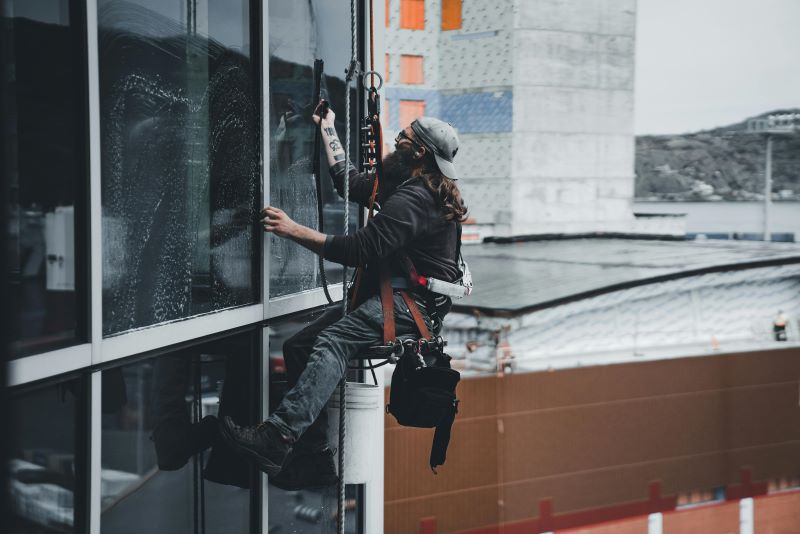
When working at height, having the right fall protection system is a life-saving necessity. Two of the most common fall protection systems are vertical and horizontal fall protection. While both systems serve the same purpose – preventing falls – they are designed for very different applications. If you want to learn the difference between these types of fall protection so that you can select the best system for your work environment, keep reading this blog!
What Is Vertical Fall Protection?
Vertical fall protection protects against falls when moving vertically (up and down) a structure such as a ladder, tower or wind turbine. These systems typically consist of a rigid or flexible lifeline (usually a cable or rope) and a device that locks onto the user’s lifeline and harness and travels with the them, locking in the event of a fall and preventing further descent.
The biggest advantage of a vertical fall protection system is that it offers continuous protection during vertical movement while allowing the user to move freely. Vertical fall protection systems also have minimal set up involved once they are installed and are ideal for confined space and ladder use.
What Is Horizontal Fall Protection?
Horizontal fall protection protects against falls when moving laterally (side to side) along an elevated work area like a rooftop, bridge or construction platform. These systems usually consist of a horizontal lifeline (like a tensioned cable, rail or track) that runs parallel to the walking surface and attaches to the user’s harness or lanyard and at least two other anchor points. These systems restrict the worker’s movement towards the hazard or edge and in the event of a fall, can absorb the shock and prevent impact with lower levels.
The biggest advantage of a horizontal fall protection system is that it allows freedom of horizontal movement and can be used to accommodate multiple users. However, the installation and set up of horizontal fall protection systems is complex and they require an engineered design to handle fall forces.
How to Choose the Right System
You will need to consider your work environment and movement requirements when choosing between whether you need vertical or horizontal fall protection. Follow these useful tips if you still aren’t sure:
- If the workers will need to move up and down, opt for a vertical fall protection system.
- If the workers will need to move side to side, opt for a horizontal fall protection system.
- If multiple workers need to be on the system simultaneously, opt for a horizontal fall protection system.
- If only one worker needs to be on the system at once, opt for a vertical fall protection system.
- If the site you are working on is permanent, investing a high-quality horizontal fall protection system makes sense.
- If the site you are working on is temporary, a vertical fall protection system may be a better choice.
At Safety Harness Direct, we stock fall protection equipment to suit a wide range of work environments and movement requirements. You can browse our collection using the button below.
Shop Fall Protection Equipment
If you have any questions about our range of fall protection equipment, or if you still aren’t sure what type of system your task requires, get in touch with us today.

